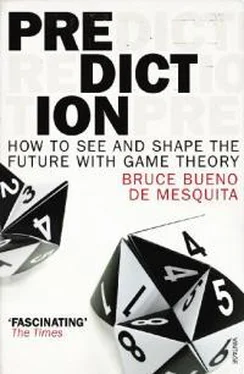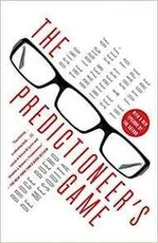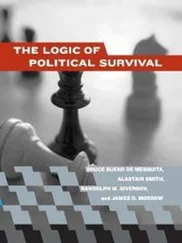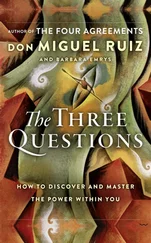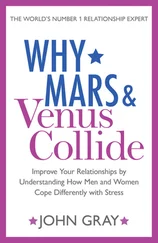4

BOMBS AWAY
WE NOW UNDERSTAND the basic principles of game theory. That’s all well and good, but how do we use these principles to solve the big problems of our time? Well, let’s not mess around—let’s take a look at North Korean disarmament.
Being born in North Korea pretty much ensures having a miserable life. The average North Korean has to work an entire year to earn what an average American, Irish, or Norwegian worker makes in around four days. Money isn’t everything, but it is a pretty good first-cut approximation of quality of life.
Of course, being born in North Korea is not always bad news for everyone. Kim Jong Il, that country’s “Dear Leader,” seems to do very well indeed. He is estimated to be worth around $4 billion. That’s about one-third of North Korea’s annual gross domestic product. (Poor Bill Gates, his wealth is only about 0.4 percent of the U.S. gross domestic product.)
Kim’s wealth, womanizing, heavy drinking, and gourmand tastes incline many to think of him as an inconsequential, even frivolous, lightweight dictator. He is frequently described as irrational, erratic, and dangerous. Most assuredly he is the last of those, but irrational and lightweight—I think not. Sure, he came by his position the old-fashioned way—he inherited it (on the death of his father, the “Great Leader,” Kim Il Sung). Still, that was a long time ago. No fool stays in power for years on end when there are so many generals, sons, and wives waiting in the wings to launch a coup.
Kim Jong Il is a savvy, skillful, vicious demagogue. If he is erratic it is because it serves his interests. While we might be inclined to laugh at this seemingly odd little New Age dictator, he cleverly maneuvers within the limitations of the miserable cards he’s been dealt to make himself a menace on the world stage. All the while that he engages in fomenting terror at home and abroad, he continues to rule a country that he and his father made dirt poor.
When Kim came to power in 1994, North Korea had virtually nothing to sell in the world. Its stature was about as low as it could get. So miserable has he made life in North Korea that many of its hapless citizens have been reduced to eating tree bark. Maybe as many as 10 percent of these poor souls, while taught to revere Kim Jong Il as a god, have died from starvation in the last decade. Yet today, North Korea is on everyone’s radar screen. Why? Because while there is hardly an economy to speak of, there is the business of missile and weapons development that Kim has carved out to remarkable success. His people may starve, but he has put the money he takes from them to work, turning North Korea into a nuclear menace. His potential to launch nuclear-tipped missiles surely provides food for thought for the world even if he puts no food on the average North Korean’s dinner table. Sure, Kim’s government is reviled in almost every corner of the globe, but just about everyone takes notice. They didn’t a couple of decades ago.
Today, the governments of the United States, China, Russia, Japan, and the Republic of Korea try to work out how to bring Kim Jong Il’s rogue state into the mainstream of international affairs. For years he was threatened, he was coaxed, he was urged to be better, but he also was rewarded by Bill Clinton, at Jimmy Carter’s behest, in the hope that North Korea’s behavior would improve. The rewards Kim’s regime got—in the form of foreign aid, technology transfers, and food relief—came with little or no genuine commitment on Kim’s part, just empty promises. More recently, the six-nation talks seem to have made progress. The task of diminishing his threat appears to be moving forward, although in fits and starts. Finding a path to resolving his nuclear threat can be, and perhaps has been, advanced by accurate predictions and engineering aimed at getting Kim to put his bombs away.
In early 2004 the Department of Defense hired me as a consultant to investigate alternative scenarios for trying to get North Korea to behave better on the nuclear front. I can only sketch the solutions I came up with here, but even so, we can see how to think about such issues. I will focus attention on the scenario that held out the greatest promise for solving the problem. This scenario looks at trade-offs between U.S. political and economic concessions in exchange for North Korean concessions on the nuclear front. Before delving into details, however, let me be perfectly clear that I am taking and seek no credit for whatever progress may have been made. Policy consultants almost never know whether they are being listened to. They almost never know what other sources of advice are being heard or what those sources are saying. All I can do is report what my analysis showed and relate it to what eventually happened.
What kind of information is needed to make reliable predictions and tactical or even strategic recommendations? First, of course, it is essential to define the questions for which we want answers. A question like “How can we get Kim Jong Il to behave better?” is too vague. We need to define the objective more precisely, and we need to know the range of choices that Kim and his government can undertake. In this case, the choices included the possibility that Kim and his regime would refuse to negotiate about nuclear weapons at all; would negotiate but then cheat on any agreement as soon as doing so became advantageous (Kim’s preferred approach); would slowly reduce the extent of North Korea’s nuclear program in exchange for different levels of U.S. economic and security concessions; would eliminate the program conditionally (with various gradations of conditions having been specified); or would eliminate the nuclear program unconditionally (the most preferred outcome from the perspective of the American president and his foreign policy team).
Next we want to know what background conditions should be imposed on the question. For example, we might ask which of the above policies Kim Jong Il could be induced to adopt if the United States publicly targeted nuclear-tipped missiles at North Korea, or if the United States guaranteed North Korea’s security within its borders, or a host of other possibilities. Each condition defines a scenario so that we can compare what is likely to happen if the United States (or some other government) takes this or that action. This way, we start to answer “what if” questions. Once the issue, the options, and the scenarios are defined, then only a very few facts and a bit of logic are needed to identify solutions.
First, the facts. In my experience, all that is necessary to make a reliable prediction is to:
Identify every individual or group with a meaningful interest in trying to influence the outcome. Don’t just pay attention to the final decision makers.
Estimate as accurately as possible with available information what policy each of the players identified in point 1 is advocating when they talk in private to each other—that is, what do they say they want.
Approximate how big an issue this is for each of the players—that is, how salient is it to them. Are they so concerned that they would drop whatever they’re doing to address this problem when it comes up, or are they likely to want to postpone discussions while they deal with more pressing matters?
Relative to all of the other players, how influential can each player be in persuading others to change their position on the issue?
That’s all you need to know. That’s all ? you might ask. What about history? What about culture? What about personality traits? What about almost everything else that most people think is important to know? Knowing all of those things would be great, and I will say more about them in a moment, but none of that information is crucial to making correct forecasts or to engineering policy change. Sure, it helps. It is generally better to know more than less. Still, anyone who does not put together information on the four factors I listed above is unlikely to assess a situation correctly.
Читать дальше
